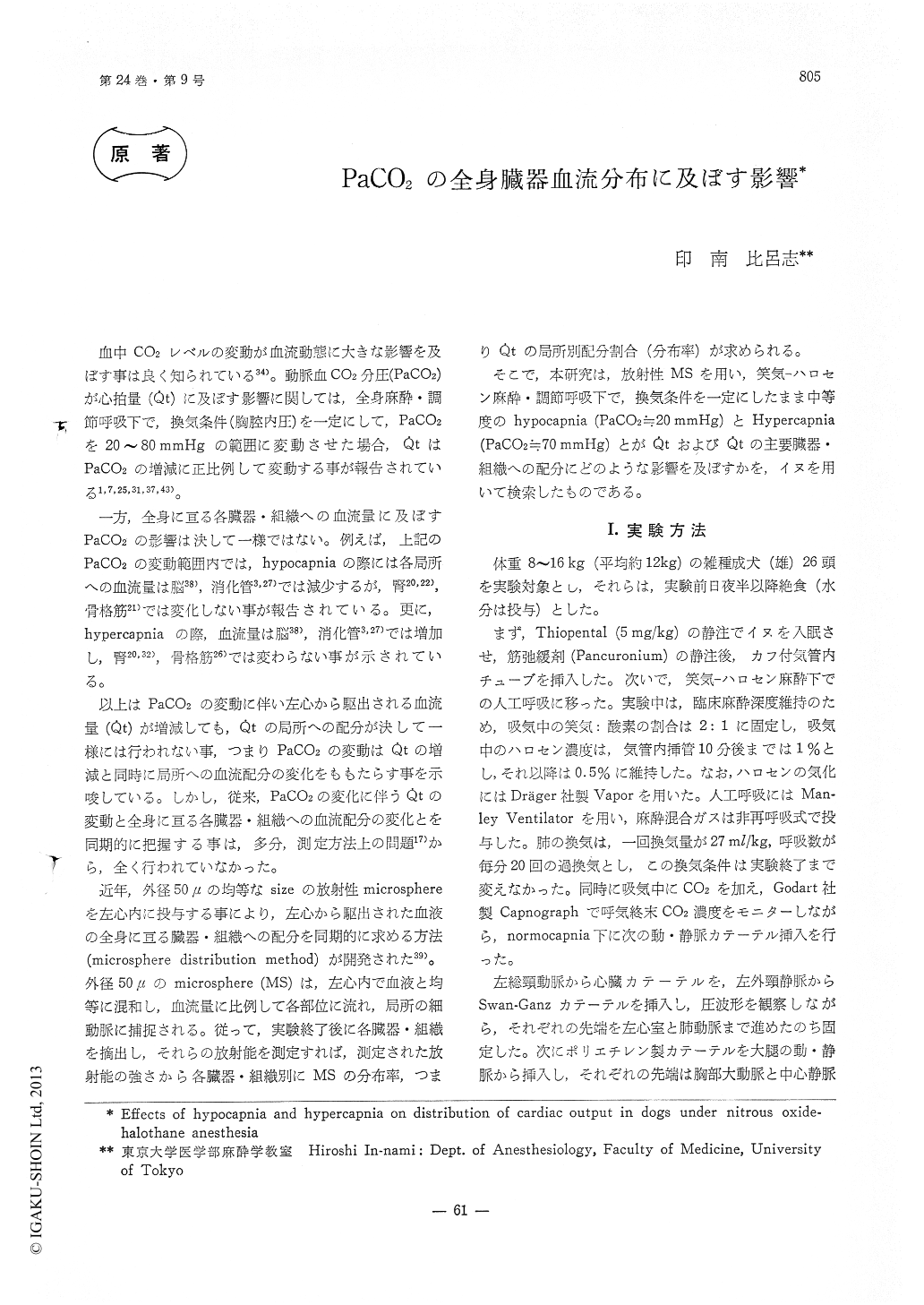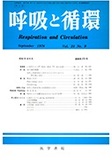Japanese
English
- 有料閲覧
- Abstract 文献概要
- 1ページ目 Look Inside
血中CO2レベルの変動が血流動態に大きな影響を及ぼす事は良く知られている34)。動脈血CO2分圧(PaCO2)が心拍量(Qt)に及ぼす影響に関しては,全身麻酔・調節呼吸下で,換気条件(胸腔内圧)を一定にして,PaCO2を20〜80mmHgの範囲に変動させた場合,QtはPaCO2の増減に正比例して変動する事が報告されている1,7,25,31,37,43)。
一方,全身に亘る各臓器・組織への血流量に及ぼすPaCO2の影響は決して一様ではない。例えば,上記のPaCO2の変動範囲内では,hypocapniaの際には各局所への血流量は脳38),消化管3,27)では減少するが,腎20,22),骨格筋21)では変化しない事が報告されている。更に,hypercapniaの際,血流量は脳38),消化管3,27)では増加し,腎20,32),骨格筋26)では変わらない事が示されている。
Effects of moderate hypocapnia and hypercapnia on cardiac output and blood flow to various parts of the body have been investigated in dogs, using the microsphere distribution method. Twenty six dogs were anesthetized with N2O (67%)-O2-halothane (0.5%)-pancuronium. They were ventilated mechanically, and the tidal volume (27ml/kg) and frequency (20/min) were kept constant throughout the study. Arterial and venous catheterizations were carried out under normocapnia for hemodynamic measurements and blood samplings.

Copyright © 1976, Igaku-Shoin Ltd. All rights reserved.


